How To Use A Number Line
Do your chief students have a number line posted on their desk-bound? Is there one hanging above the chalkboard in your classroom? Although teachers today have many options for modeling mathematics, the number line is still an important and useful math tool. While cubes and other manipulatives support learning by representing numbers, the number line actually develops learning past giving students another look at number relationships. Your main students may find using a number line more challenging for some concepts. However, it'south important to stick with it as number lines provide learning opportunities for later skills that tin't be replicated with cubes, such equally negative numbers, decimals, rounding and graphing.
That'south why at Happy Numbers nosotros include the number line early on and oftentimes throughout our exercises. In this post, nosotros'll share some of these activities that you can apply with your class at unlike stages of learning.
Counting and Numeration
Our first number line exercises help reinforce the count sequence and number recognition. Students count to reach a given signal on the number line:

or identify a number respective to a given betoken:

These activities can be replicated off-line, but an advantage of using them online at HappyNumbers.com is that students receive immediate support afterward any errors, such as being reminded of the count sequence for this exercise:

which allows them to understand the fault and to correct information technology:

Somewhen, students work to complete a number line using non-sequential numbers. Here, students begin with a number line only labeled with 0 and 10:

An error reveals the rest of the numbers:

Basic Addition and Subtraction
Another great opportunity for exploring a number line is when learning the first steps of addition and subtraction. Assuming your students are familiar with number line basics mentioned above, you can showtime relating movements of objects along the line to their corresponding numbers on the number line:


The same for subtraction:

The visual back up that the number line provides helps immature learners grow from concrete to abstruse to algebraic thinking.
In after exercises, students complete the equation themselves based on the model given using the number line. For addition:


Once students are familiar with the movements of addition and subtraction on the number line, nosotros tin can claiming their agreement by presenting this data in a new way. This blazon of multiple-option exercise helps students develop deeper understanding of number relationships:

Transitioning through 10 in Add-on and Subtraction
A particularly challenging point in understanding basic operations is the transition through 10. In our contempo post, Teacher's Best Friend: Base-x Blocks, we shared some ideas on how you can support this concept using base of operations-10 blocks. Another great model for building deeper agreement and fluency with this concept is the number line.
For example, at the phase when your students are learning to add/decrease through ten past adding/subtracting 1s, you tin can take them model this strategy on the number line. Begin with problems that show the second addend (or subtrahend) of an equation in steps of 1:
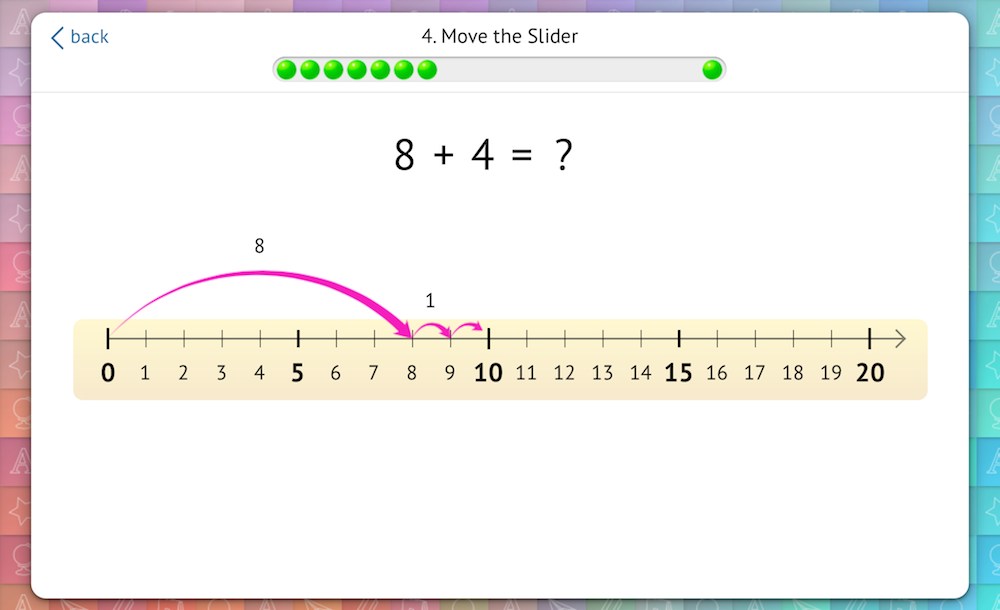
and use the number line model to solve the equation:
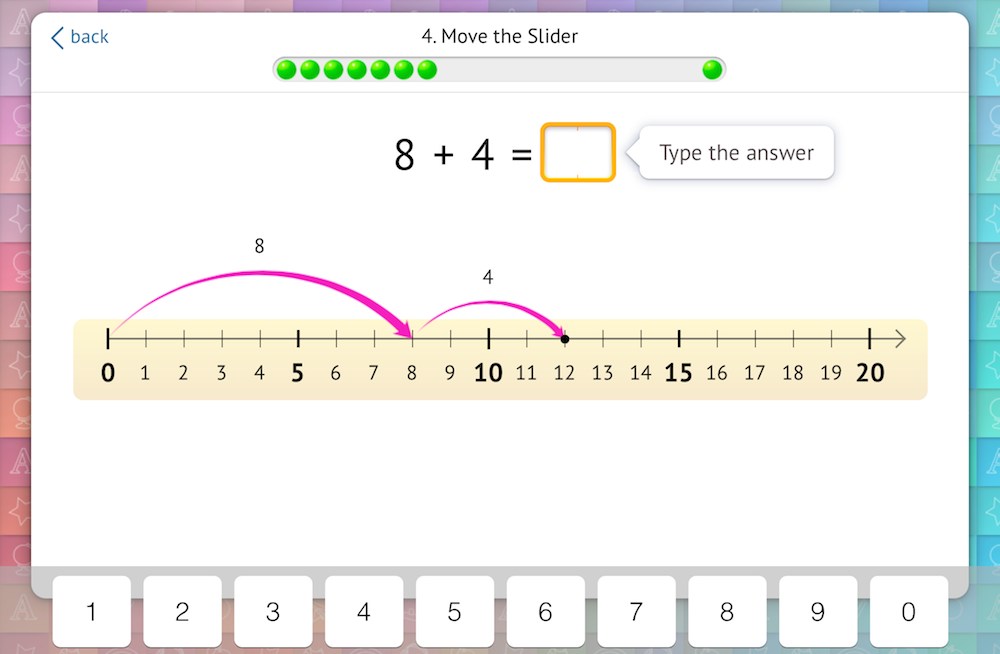
This same practise increases in difficulty when the numbers are removed from the number line:

This ability leads into adding/subtracting to ten and and then beyond by breaking an addend (or subtrahend) into two parts. Thus, students visualize the strategy of finding eight+6 by breaking it into 8+ii+iv:
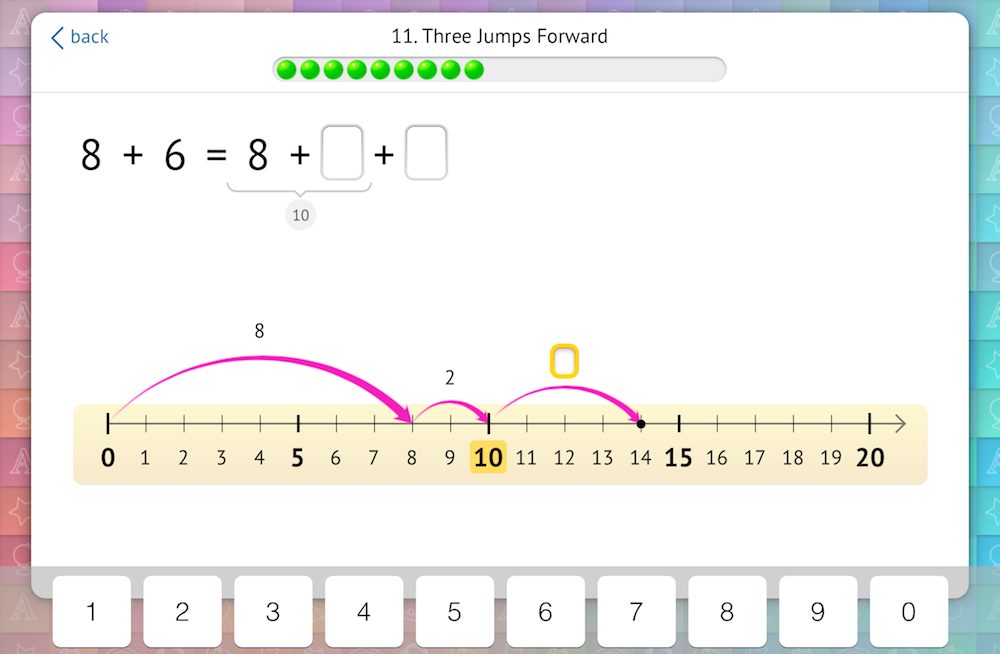
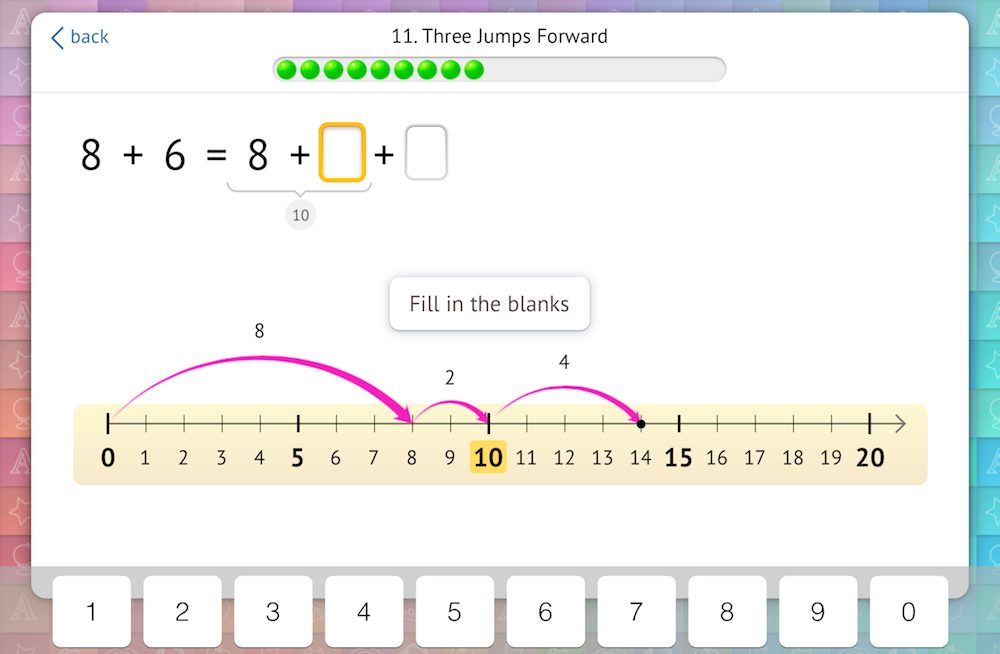
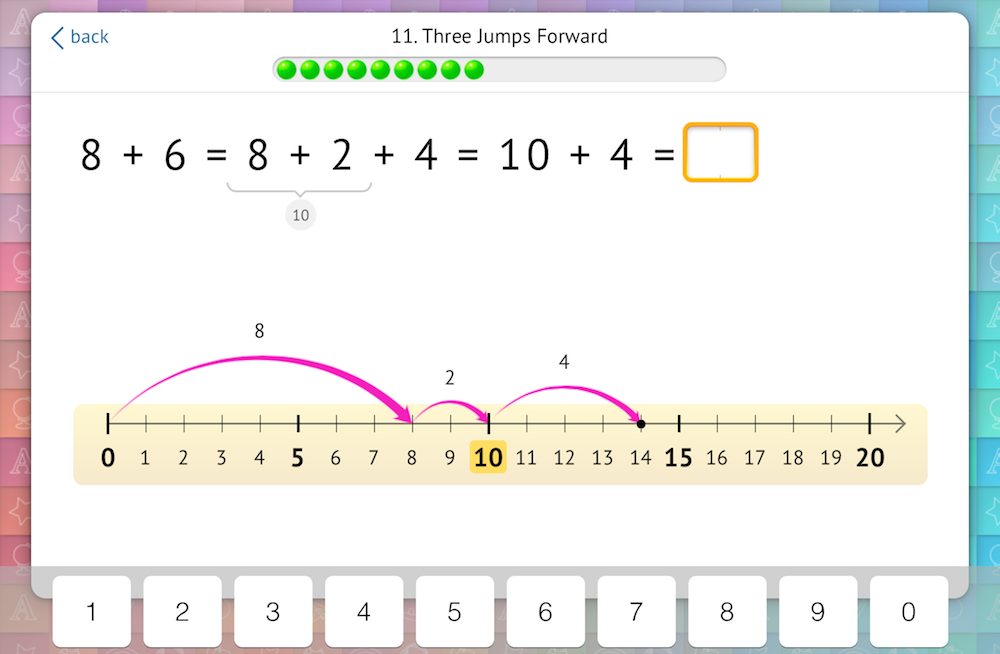
In the exercises to a higher place, students were shown the jumps to brand on the number line and had to relate them to numbers. To replicate this thought on paper, teachers would have to provide an equation and a number line with pointer 'jumps' indicated. One time students have mastered this step, they advance to determining the concluding 'leap' on their own, without being given the arrow. This requires them to call up about how the second addend (or subtrahend) needs to be broken down. Rather than just using the model, they are at present building the model. Hither, a instructor using pencil-and-paper exercises would provide the equation, a number line, and the first two arrows just. Practicing this skill with a model leads toward using the strategy mentally down the route:
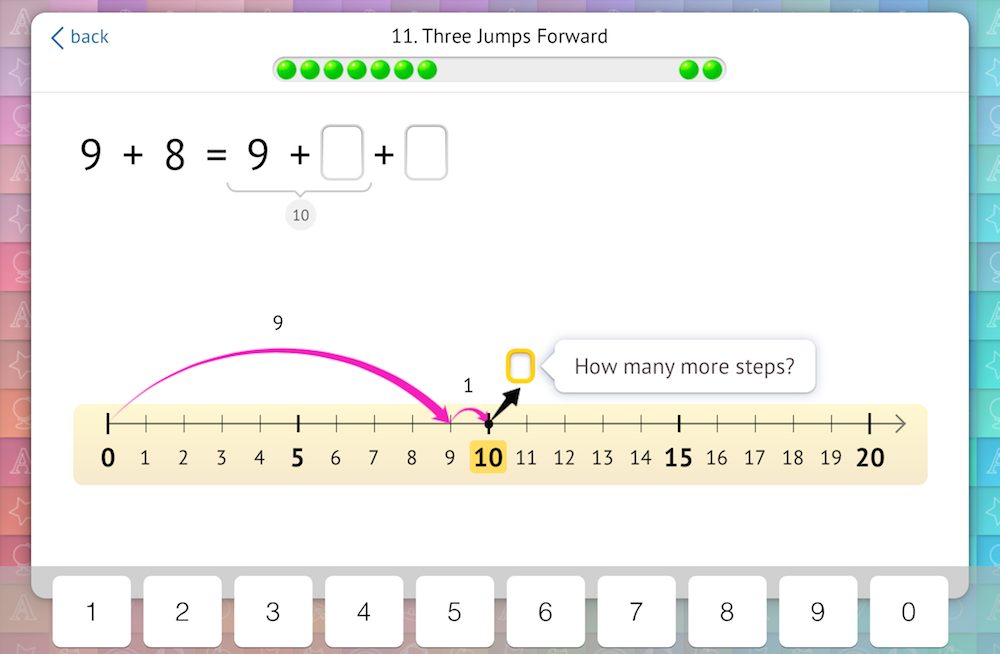
Again the advantage of using these exercises online is that we provide instant feedback, which illustrates the logic behind how this step should be done:

And then allows the educatee to correct his mistake:

And continue with this practice on the right rails:

We hope these ideas will give a little boost to your instruction by using number lines in new ways or just more frequently. Whether you use traditional paper number lines or your account at HappyNumbers.com, this tool volition bring greater conceptual understanding and mathematical fluency to your students. If yous have found this mail helpful, please frontwards it to your grade-level colleagues or ship usa your feedback! We are always working to make math learning improve for your students!
How To Use A Number Line,
Source: https://happynumbers.com/blog/how-to-teach-early-numeracy-using-number-line/
Posted by: samonsatrom1955.blogspot.com


0 Response to "How To Use A Number Line"
Post a Comment